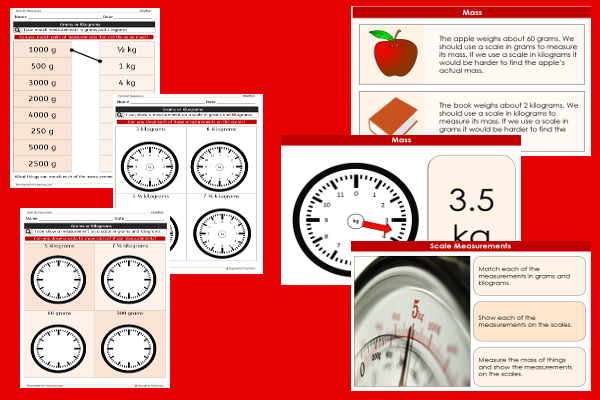Scale Measurements

This maths teaching pack for Key Stage Two gets the children to identify and record whether to measure the mass of different objects using scales recorded in grams or kilograms so that their masses can be measured accurately.
The class can explain and model how to read and use the divisions on a scale correctly to show the measured masses of some different objects in grams and kilograms.
Download this teaching pack including a lesson plan, classroom activities and an interactive presentation to identify and record whether to measure the mass of different objects using scales recorded in grams or kilograms so that their masses can be measured accurately
Activities in this teaching pack include a worksheet to match a range of different measurements recorded in grams and kilograms and templates to record the mass measurements of different objects in grams and kilograms shown using the divisions on a scale.
The interactive presentation gets the children to explore how to measure the mass of different objects using scales that have been recorded in grams or kilograms.
This lesson is part of a maths scheme of work to get the children to practise measuring, recording and calculating measurements in mass when working with and converting units in grams and kilograms. There are teaching activities for shared learning, differentiated worksheets to support independent learning and interactive presentations to introduce concepts and key skills.
-

Theme Park Visit
Practise identifying and calculating the timing and duration of rides and events when visiting a theme park on a special family trip
-

Family Holiday Trips
Identify and record how to compose and publish recounts using adverbials of time and place to describe family holidays to different places in the world
-

Money Multiplication
Explain and model how to use standard written calculation methods to multiply money amounts in pounds and pence when solving number problems
-

Sport Teams
Explain and model how to use brackets and dashes to add extra information to sentences describing how to play sports and games as part of a team
